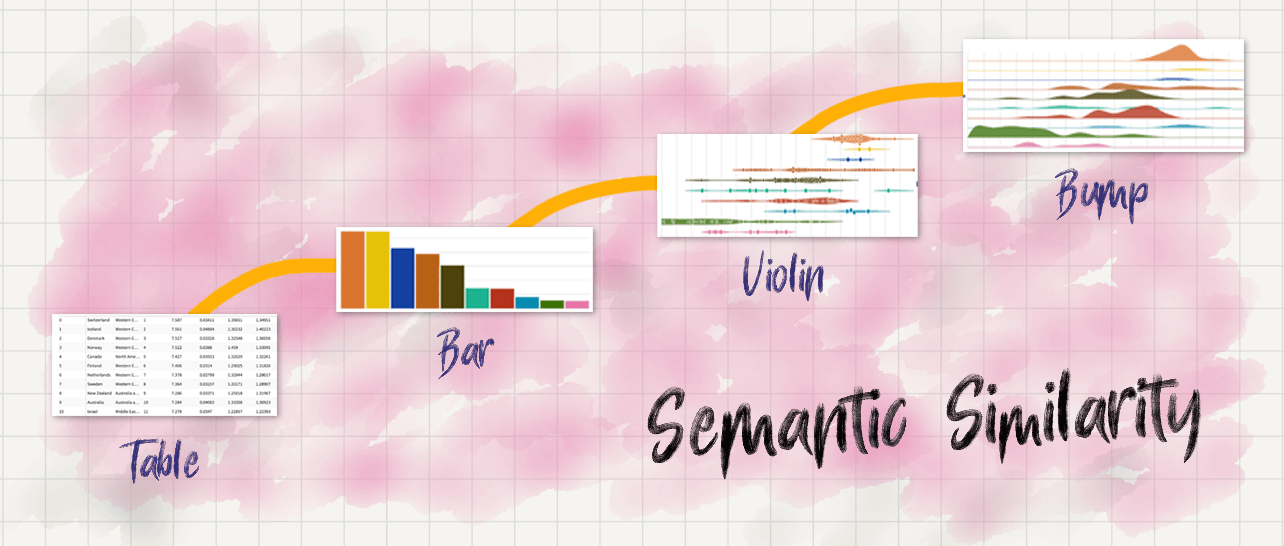How to build a trust infrastructure between your data team and your audiences
Jason Forrest is a user experience designer at McKinsey & Company, working in people analytics. A version of this post originally appeared on Medium.
While everyone loves data, it can be perceived by many as something ‘technical’ (if not outright scary) and at the very least, as something a bit ‘magical.’ While some data specialists are embedded within a team and understand its business context, many are on the periphery of their organizations—viewed as brilliant but mysterious wizards capable of transforming data into insights.
Despite how well-intentioned, the distance that forms between a data team and its audience can often be attributed to a lack of empathy. This can lead to a reactive relationship with your audience; simply responding to requests for information without any real idea why. It's likely that your colleagues think you just ‘don’t need to know’ why they need the data (or visualization) in the form that they might expect—or maybe they think you don’t care about why they need it. Regardless, if you’re trying to find new methods to explore data and visualize it in meaningful ways, you need to reposition your relationship with your audience so that they trust you enough to collaborate.
You have to want to earn it
There are many ways to build trust with your audience, but the most important consideration is that you have to earn the trust. It sounds minor, but the moment you decide that you want to earn your audience’s trust, you shift away from a reactive mindset and towards a collaborative one. Reactive relationships revolve around a request and a reaction to that request. Trust is also important in these relationships (and we all have them) but the requestor is likely coming to you because they know they will get what they want. It’s a transaction.
Collaboration is a bit more complex. It means that both parties work together to solve the issue in focus. While collaboration may seem more difficult, the benefit from collaborating with your audience is usually greater than the individual contributors. Ideas are built in an inherently iterative manner and everyone involved has to contribute ideas. There’s a dynamic flow of communication in collaboration and the moment anyone’s trust erodes, the collaboration usually ends.
Trust becomes the currency of your collaboration, so how do you earn it?
1. Empathy is curiosity

In order to collaborate, you need to know enough about what your audience needs so that you can tailor your approach. It all starts with empathy, meaning, do you actually care about what they want and why they need it? Empathy is universal, it’s non-hierarchical, it’s free—and best of all—empathy creates more empathy.
One of the best ways to breed empathy is simply by talking to people. Be curious about what your audience is doing and why they need data to do it. You’ll be surprised at how infrequently people ask basic questions about what others do on a daily basis and how data influences that work. Everyone likes to talk about themselves, so when you ask a question it signals their importance in your relationship. Just by showing curiosity, your audience will start to wonder why you care so much, and this usually forms the basis for more conversations. Before you know it, empathy creates more empathy.
A case study from Elijah Meeks, Senior Data Visualization Engineer at Netflix:
“From a practical perspective, empathy needs to be demonstrated in your work as well as your meetings. In most cases, when I’m asked to create an analytical product at Netflix, it already exists in some other form (a Tableau dashboard, an rShiny app or a data science notebook). The first thing I do is recreate the data visualization in the form they expect (a bar chart, a cumulative density function, or a table), and only then do I introduce other visual forms as context or prototypes for new approaches.
With data visualization, audiences have strong associations with certain data taking certain forms—not just the charts but often the whole dashboard. Demonstrating empathy in these situations is accomplished by rendering the form they expect and then gently transitioning that form into something more effective. Hence the emphasis on semantic similarity in exploratory design.”

2. Talking to people helps everyone learn their roles
When you care enough to ask your audience how you can engage with them, you will likely learn the best way to work together and get it done. This effectively activates your role in the relationship; and in doing so, helps to demystify your work so you can create more impact for your audience.
Remember that data visualization is itself a form of communication. When building data visualizations, we have to avoid the tendency to look at requirements as just a set of checkboxes to tick off. This isn’t going to be accomplished by waiting for your audience to suggest a different technique. They probably don’t know other data visualization techniques, or worse, they’ve been burned by a beautiful-but-useless chart before. Instead, by talking to them about their needs, you learn what your audience might want to see if they were more aware of advanced techniques.
Talking to people doesn’t just mean gathering their requirements and understanding their goals. You need to continue to collaborate with your audience through a dialogue built with charts. Your goal ultimately is to communicate the salient details of the data, but on the way, the charts you develop will become a conversation of their own—to help your audience understand the possibilities, as well as the visualizations they’ve already relied on.
This kind of relationship changes the traditional, reactive relationship. “Show me the numbers” is not a transaction anymore. It becomes a story told in concert with your audience. The data comes to life through your conversation and the collaboration is strengthened. Trust has been earned.
3. Create a shared understanding

Talking to people isn’t the whole story. In order to earn trust, you also have to ensure that everyone understands (and agrees) on the definitions of the data and the terminology—and if they don’t understand, you should provide learning resources. This is a two-way street, as the terminology that your audience uses may likely differ from your own, so mutually understood terms become key to having a meaningful conversation.
While this seems absolutely commonplace, I’d argue that most teams do not share a common understanding of the terminology or even of the data itself, what the data is called, or what it represents. Just take a quick poll of your colleagues and you’ll see.
A byproduct of crafting explicit definitions is that it exposes inconsistencies between team-specific definitions across an organization. Large-scale business intelligence applications (or even file sharing platforms) can actively be leveraged to foster alignment to create these understood definitions and metrics. Since multiple colleagues/teams are all using the same platform, it allows for these common terms to radiate through an organization and call out discrepancies. Central, integrated systems serve a single source of truth that seeks to consolidate institutional domain knowledge and spread consensus.
What’s more, taking the steps to find, discuss, and agree upon those definitions requires the empathy to care about the importance of a shared language. The time and focus it takes to explore this builds more trust as a result!
4. Data sources and quality
Even when you’re communicating and agreeing on the terms, the actual data source and quality of the data is important to expose. If your audience doesn’t have confidence in that data source, it will undermine the validity of whatever it is you’re trying to show them, thus reducing their confidence in you and eroding the trust you’ve been working so hard to build.
If the data quality is bad, just point that out and expose the uncertainty. Exposing the source and expressing your confidence in the data will cause you to explain why it’s robust or crappy and will be just one more journey you’ll take with your audience. Everyone will walk away understanding the system and their roles a bit more. Definitions will be reinforced, empathy expanded, and trust cemented.
How to cope with uncertainty is a different question, as many of the data visualization books just don’t give enough clear guidance. Maybe this is because our industry hasn’t established the go-to methods for visualizing these facets of the data. So you’ll need to discuss this uncertainty and the best way to visualize it with your audience. When visual methods don’t work, fall back to using callouts, titles, and other text to explain in short, easily-digested sentences (preferably with links to detailed definitions).
Building a trust infrastructure

All of these methods will help prove to your audience that you want to collaborate. In doing so, it’s highly likely that your relationship with your audience (even if it’s hierarchal) will change. “You don’t need to know” will likely turn into a discussion about what happens next after the data is understood. As a result of all of this trust currency, your methods for presenting data will likely change from simple reporting to a collaborative conversation about the insights inside of the data, thereby expanding data visualization literacy across your organization.
It’s at this point that we as data professionals become valuable thought partners. When everyone in a decision ecosystem understands their role, it allows for a more inclusive exchange of ideas. This fluid communication turns from earning trust into building respect and allows a team/organization to move from a siloed, reactive mindset towards an integrated, iteratively-minded team focused on solving problems in a fluid manner.
Building a trust infrastructure is an important strategic necessity to make an impact, and if you do it right, it will make your work more enjoyable too.
Articles sur des sujets connexes
Abonnez-vous à notre blog
Obtenez les dernières nouvelles de Tableau dans votre boîte de réception.









